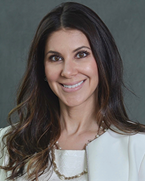ASLMS / ASDSA / FDA Session Summary
march 9, 2017
The ASLMS has been collaborating with the FDA for years to provide educational meetings at the FDA. The goal of the meetings is to provide an unbiased educational forum and two-way exchange of information about lasers and related technology and the challenges of bringing technology forward.
On March 9, 2017, Dr. Omar Ibrahimi, Dr. Arisa Ortiz and Dr. Shlomit Halachmi met with the FDA and members of the ASDSA to discuss a number of topics.

Omar Ibrahimi, MD, PhD,
Connecticut Skin Institute,
Stamford, CT
New Advances in the Treatment of Darker Skin Types
Ethnic skin is a growing subset of the US population and by 2050 may compromise half of the American population.
Safe treatment of ethnic skin and skin of color patients with laser or light devices requires extra attention to laser principles. In general, longer wavelengths, larger spot sizes, longer pulse durations and skin cooling can help minimize side effects.
Other energy based devices such as ultrasound, radiofrequency or cryolipolysis may not affect pigment but can still come with side effects if treatments are not performed properly.
Inclusion of darker skin types in new device studies is key to understanding the risks of side effects in this growing patient population.
Skin Tightening/Laxity/Toning

Arisa Ortiz, MD, University of California, San Diego, CA
With patients more resistant to invasive treatments and those that result in significant downtime, there has been a rise in the use of energy-based devices to improve skin laxity and induce tissue tightening as an alternative to surgery. Many different technologies may be used to induce skin tightening including: traditional and fractional ablative lasers, non-ablative lasers, radiofrequency devices (monopolar, bipolar, fractional), focused ultrasound, and picosecond lasers. These energy-based devices deposit heat into the skin to stimulate neocollagenesis and dermal remodeling resulting in a clinical improvement in laxity. When used in skilled hands, energy-based devices can non-invasively achieve skin tightening in a safe and effective manner.
Shlomit Halachmi, MD, PhD, Harvard University Health Services, Cambridge, MA also gave a presentation on Melasma.